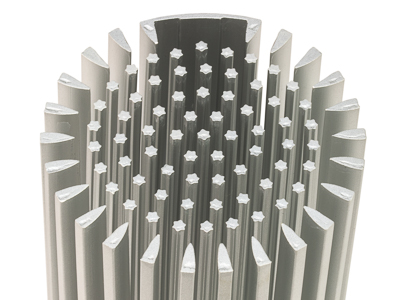Thin Fin Extrusion

Not difficult to discern from its name, this heat sink relies on extrusion technology through which the super fine thins are thrust outward from the heatsink base. Unlike other extrusions, however, the thin fin technology actually maximizes the benefits of ambient air cooling, making this not only a top performer, but a cost effective one as well. Indeed, the makers of thinly finned extrusions have been able to attain levels of fin width as little as one to three tenths of an inch, making this design one of most effective cooling devices on the market today.
Ideal for high volume applications, thin fin extrusion heatsinks have been able to harness the cooling power of surface area without losing the conductivity necessary to make a heatsink work. While they are very extremely space efficient - able to be manufactured in small packages - they provide one of the better solutions for thin cutting that is available to electronics manufacturers today.
For Your Next Project, Contact CoolianceToday!
High reliability thermal solutions & precision metal products.
